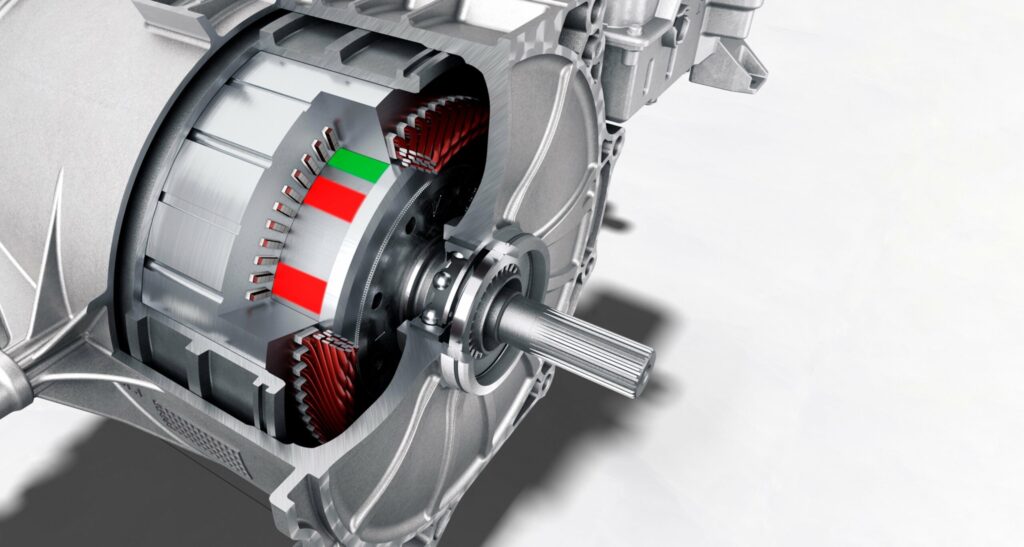As the electric vehicle (EV) industry continues to evolve, one of the most significant areas of innovation is the design of the motors that power these vehicles. At the heart of this design lies a critical component that often goes unnoticed: lamination stacks. These seemingly simple layers of electrical steel are essential to enhancing motor efficiency and reducing weight, two key factors that are vital for the success of electric vehicles.
The Role of Lamination Stacks in EV Motors
Lamination stacks are a crucial part of the stator and rotor assemblies in electric vehicle motors. They are constructed from electrical steel sheets that are stacked one on top of the other to create a solid core that transports the magnetic flux that the motor produces. Lamination stacks’ main purpose is to lessen energy losses brought on by eddy currents, which can produce extra heat and lower efficiency.
Rotor lamination and stator lamination both play vital roles in ensuring the motor runs efficiently. The stator lamination supplies the stationary magnetic field that interacts with the rotor, while the rotor lamination facilitates the motor’s rotation. By using precision-engineered lamination stacks, manufacturers can significantly improve the power density of the motor, which is particularly important in electric vehicles. Lightweight designs help extend the driving range, and reducing motor mass contributes to enhanced vehicle performance.
Key Benefits for Lightweight Motor Design
One of the most critical advantages of lamination stacks is their ability to reduce motor weight while maintaining high efficiency. This is achieved through the careful choice of materials and precise engineering. Electrical steel, which is commonly used for lamination stacks, is highly magnetically conductive, allowing for efficient energy conversion without adding unnecessary bulk.
Reducing weight is a key priority in electric vehicle design, as it directly impacts driving range and battery efficiency. Lamination stacks, through their precise engineering, allow manufacturers to create smaller, lighter motors without sacrificing performance. Whether it’s for a high-speed passenger car or a commercial electric truck, the stator lamination and rotor lamination can be customized to meet specific power and torque requirements, offering unparalleled flexibility in motor design.
Reducing Heat Loss and Enhancing Efficiency
Another key benefit of lamination stacks in EV motor design is their ability to reduce heat loss. In traditional motors, the flow of electric current through the stator and rotor creates resistance, which generates heat. This heat is typically wasted energy, reducing the overall efficiency of the motor.
Lamination stacks help combat this issue by minimizing the creation of eddy currents. These are unwanted circulating currents that flow within the material of the motor’s core, leading to energy loss. By using thin sheets of electrical steel that are insulated from each other, lamination stacks reduce the path for these currents, effectively lowering the amount of heat produced. Rotor lamination and stator lamination work in tandem to ensure minimal heat generation, making the motor cooler, more efficient, and longer-lasting.
Cost-Effective and Scalable Solutions
In addition to enhancing motor performance, lamination stacks also offer cost-effective benefits. Electrical steel is a popular choice for motor producers because it is easily available and reasonably priced, despite its high effectiveness. As the EV market continues to grow, the demand for lightweight and efficient motor designs will only increase, making lamination stacks a scalable solution for large-scale production.
The flexibility of lamination stack designs means that manufacturers can adjust production methods based on the motor’s size and requirements. Whether for compact city cars or larger electric trucks, rotor lamination and stator lamination can be adapted to fit a variety of motor specifications, enabling cost-effective production without sacrificing performance.
Future Trends and Innovations
As electric vehicles become more mainstream, the push for better performance and efficiency will drive further advancements in motor technology. The role of lamination stacks in this development cannot be overstated. Researchers and engineers are constantly exploring new ways to improve the materials used in lamination stacks, such as experimenting with advanced alloys and coatings that further enhance their performance.
The application of thinner and more precisely designed laminations is one interesting future area. By reducing the thickness of each layer, manufacturers can decrease the overall size of the motor, making it even lighter and more efficient. Additionally, the continued improvement of insulation materials will further reduce energy losses and increase the operational lifespan of both rotor lamination and stator lamination, making them even more effective in electric vehicle motor design.
Conclusion
Lamination stacks are far more than simple components within an electric vehicle motor. Their contribution to enhancing motor efficiency, reducing weight, and improving performance is undeniable. As the electric vehicle industry continues to advance, rotor lamination and stator lamination will remain fundamental to the development of lightweight, high-performance motors that drive the future of sustainable transportation.

